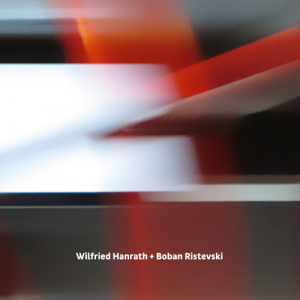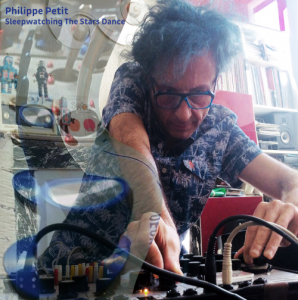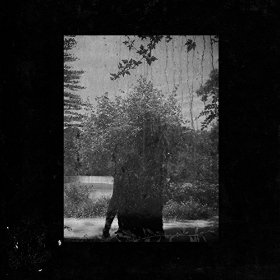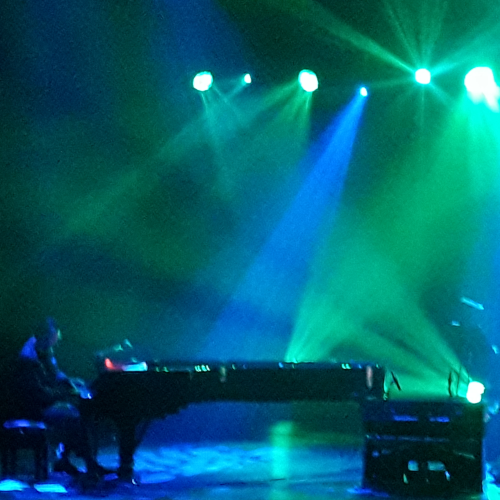Attenuation Circuit has been releasing their limited-run experimental releases for over twenty years with no sign of running out of enthusiasm or willing contributors to broaden our aural palates. Two recent releases go a long way to showing how diverse the releases can be.
 First up is a collaboration between improvisational electronic composers Wilfried Hanrath and Boban Ristevski finds them covering long-form, slow-moving textural soundscapes with infinite patience and a sense of that unwinding journey that begins to define your existence.
First up is a collaboration between improvisational electronic composers Wilfried Hanrath and Boban Ristevski finds them covering long-form, slow-moving textural soundscapes with infinite patience and a sense of that unwinding journey that begins to define your existence.
Dedicated to the fairly recently passed spiritual leader Ram Dass, these three exercises in drone exploration cover very different ground, but still manage to instil in the listener a sense of calming wonder, with the ancient breathing of opener “Part One” feeling a million miles away. This distorted rhythm is encumbered by the rattle and clang of organisms assisting in an arcane process to which we are not privy.
Things are moved subtly, constant adjustment being necessary to enable the cycle, but without overall effect as the laborious rhythm continues. The sound travels across oceans of space, so insinuating yet comforting that when the rhythm suddenly stops, we feel as if we have been cast adrift, bereft of what has become so important. A distant supersonic journey is unleashed in “Part Two”, a sense of comfort, the constant hum of never-ending travel. Distant panoramas seen through windows appear to create changes in air pressure as they grow incrementally closer, everything just being on the verge of hearing; a celestial choir, a craft passing in the other direction.Yet everything is in thrall to the omnipresent drone flooding your senses with incredibly satisfying and increasingly subtle nuances, a fluttering language that gradually blossoms until a feeling of external heat extinguishes this and the crackling consumes. The length of this piece causes it to enter your subconscious and when “Part Three” enters, once again the change of atmosphere is palpable.
A fluttering rhythm; ascending and descending notes, a movement through foliage, discovering a sacred rite in mid-flow. The sounds are metallic and distorted, piercing deeper, breaking up and scattering, dissipating then coalescing in gradually shifting shapes. The rhythm changes, becoming dirtier, more broken, edging towards something then coming to and abrupt halt and leaving us once again bewildered in silence.These three pieces attract and consume in equal measure, yet you mustn’t allow yourself to be entirely submerged or you will never recover. A true feat of electronic soundscaping that will never grow old.
 On the other hand, the latest release from homme extraordinaire Philippe Petit finds him at the peak of his diversity, this collection running the gamut of noise and space with all the little details twinkling in between; his search for the perfect means of communication pushing him ever onward, out beyond the expected, drifting languidly amongst the barely visible.
On the other hand, the latest release from homme extraordinaire Philippe Petit finds him at the peak of his diversity, this collection running the gamut of noise and space with all the little details twinkling in between; his search for the perfect means of communication pushing him ever onward, out beyond the expected, drifting languidly amongst the barely visible.
The gentle probing sounds are soothing, machine-made though with a sort of humanity, but not as we might necessarily recognise it. The pieces move gingerly, opening up fresh doorways but without fear. Generated tones are playful with a sense of discovery, the cymbalom siting amidst all this, a nice dichotomy that merges with voices detected through the aether, a further paradox in the miasma of electronics. The search starts up again towards the end and the variety of phases that shine through is compelling.
“Guess Who’s Knocking At The Doorbell” contains uglier tones, the Serge synth donating a spastic rhythm, trammelling squelches obscuring lighter tones. You feel them vying for superiority, sounds stretched to breaking point, tortured, tested then released. Equilibrium is gained then lost and it is all over. The cymbalom reappears in “Sleepwalking”, measuring time, a gradual upheaval over a metallic rhythm, a distorted train, hip and progressive, diversity in sounds mashed up and unable to settle. When it tries, that tension of lying on your back waiting, dark meteorite tones flashing briefly, things tracking in the distance. Movement is barely perceptible and enhanced by what sounds like a cello. There is a surprising vibrancy to Philippe’s selection of pieces here; you feel that there has been a break in an artistic impasse and things are flowing smoothly, a vibrant hypnosis that still can drill into your mind, but leaves room for recovery.The long form of the final piece allows space aplenty, the simple sounds reaching out like distant, sparkling tendrils echoing in the vast emptiness increasing in tempo and texture as the spaces fill up, the air thickening, tension growing. The myriad sounds are constantly morphing, an ever-present evolution at work but mixed with a contemplative solitude that is both welcome and yet unexpected, ushering us out into a bright future.
Sleepwatching The Stars Dance might be the most settled yet varied selection I can remember from Philippe. It glows with inner discovery and that makes its way out to the listener. A real treat and one that makes us keen to see what comes next.-Mr Olivetti-



